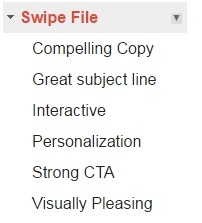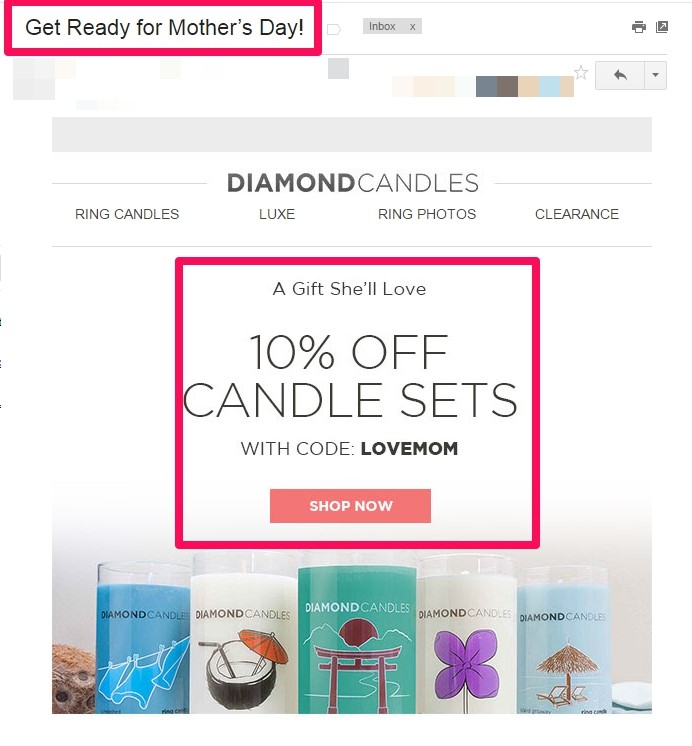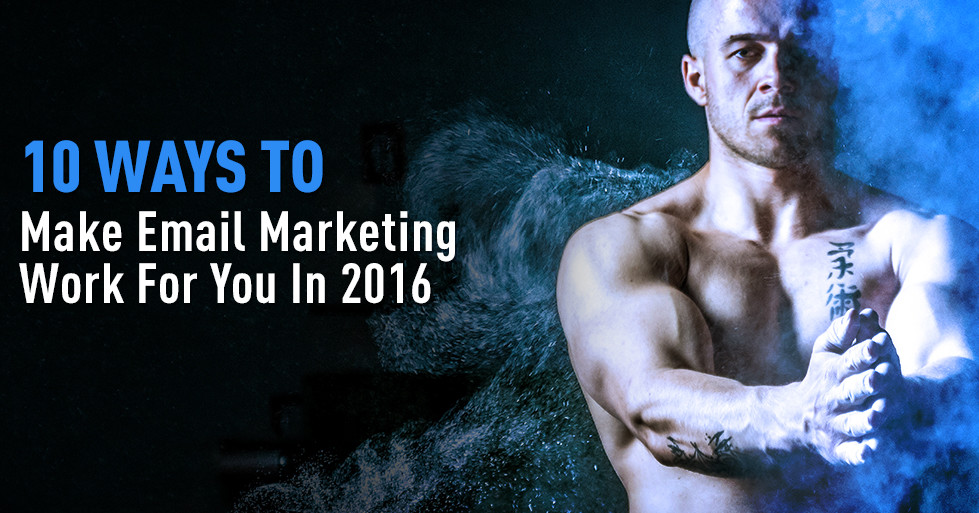With the rise of social media, online advertising, and the ever-present growth of technology, emails seem to have been left in the dust. At least, that’s what some sources would have you think. The reality is very different. Email marketing is alive and well, and more importantly, it’s evolving to take advantage of today’s modern technology.
Simply going through the motions and sending out weekly or monthly newsletters isn’t enough anymore. There’s a goldmine of potential leads and conversions waiting for you here. All you need to do is adapt your email marketing strategy and make it work for you. Today, we’ll explore 10 actionable ways you can do just that.
An email seems like a simple thing. It’s a subject line and a body, but within those two aspects are hundreds of possibly tweaks and variations that can make or break your marketing efforts. These methods and strategies are designed to help you approach email marketing from new directions. It’s no secret that email marketing is one of the top content types that provide a high ROI. These efforts will give you massive returns on your investment.
1. Start With an Inbox Swipe File
Our first tactic involves creating a swipe file within your inbox that allows you to grab and store emails that strike you as successful marketing attempts. Whether it’s a captivating subject line, an incredibly personalized body, or an all-round great attempt at getting you to convert, this is place to store them.
Here’s what my swipe file looks like on Gmail:

Creating a swipe file is a simple, but effective way to start building an idea of what works in the realm of email marketing. You can manually add emails that strike you into these various categories to reference later.
As you can see, my swipe file uses several sub labels that allow me to categorize emails into different factors. That way, if I need a great subject line format, I can simply check the label for it. Online businesses should always have a file like this for every aspect of their marketing.
As Picasso once said: “Good artists copy; great artists steal.”
Keep an eye on what works and use that to inspire your campaigns. You can even reach out to competitors you really liked when you’re building links and let them know how they inspired your email marketing campaigns.
2. Hire and Train Better Writers
Whether you’re writing a blog post, social media comment, email, or a tweet, great copy is at the heart of any successful email marketing endeavor. Like I always say, everyone can write, but being a writer is a whole different story.
Becoming a better writer requires practice and like any skill it needs to be sharpened or it will become dull.
- Here are some quick tips I can offer as a writer constantly seeking to improve my craft:
- Break up your content with bullet points and sub-headers. Make your emails easy to read and digest.
- Use writing tools like Hemingway to ensure your writing is clear and concise.
- Read as often as possible to absorb better tactics and ideas.
- Write every day, even if it’s just nonsense. It will keep your skills sharp.
- Work with other writers and bounce ideas off one another.
3. Separate Your Lists
When you’re building an email list, you will see that people sign up in various ways and for a variety of reasons. Just because they all joined, doesn’t mean they all did so for the same purpose. Since every customer is different, you need to start treating them differently.
To avoid wasting your reader’s time, spit up your email lists so you’re targeting specific users for the right reasons. Try organizing them into these three categories:
1. Separate Your Best Customers
You should start with a VIP list of sorts that contains people who have purchased from you numerous times and represent your most valuable leads. You don’t want to send boring and standardized emails to people like this. You want to give them a unique experience and exclusive value.
Here are some examples of ways you can make these customers feel important:
- Send them personalized emails that cater to their previous purchases
- Offer them exclusive access to a new product or service before anyone else
- Thank them with an exclusive price or promotional offer
2. Separate Leads and Conversions
Someone who has never purchased a single product from you is still a lead and you should market to them differently than you would to someone who already purchased from you. Leads should be given emails packed with information and links to the latest blog posts.
A converted customer doesn’t need information since you’ve already sold them. They should get emails that are more focused on a call to action or a value proposition that will pull them back in again.
3. Set Aside Your Cold Email Addresses (Then Bring Them Into the Fold)
People who haven’t touched your emails in months shouldn’t be ignored, but they should have their own list. For people like this, you need to more subtly grab their attention through targeted advertising.
One great suggestion I read was to place their email into Twitter Ads that will show them your marketing prior to another email campaign.
4. Grow Your Email List by Reducing Friction
In terms of marketing, friction is everything a user has to do or accomplish to go from a lead to a conversion. The less friction, the better, but you have to obtain the information you need as well, or you won’t be able to replicate that success.
It’s difficult to achieve that balance, but Quartz was able to double their email sign-up rates by looking for ways to reduce that friction. When they first started, they required an email address to create an account so they could build functions around specific users and their needs.
It was a solid motivation, but people weren’t signing up as much as they wanted. The next version sought to separate email subscription from account creation. They also made three big changes that I think would benefit any email marketing campaign:
- Require an email address alone (nothing else)
- Instead of a double opt-in which required users to confirm via an email, create an opt-out. Subscriptions would activate immediately and only stopped when the user opts-out
- Optional marketing fields that don’t add any friction
These simple changes doubled their daily subscriber rate! Remember as you design your email subscriptions, that they need to be as simple as possible.
5. Define a Minimum Viable Email Marketing Campaign
For a small or startup business, a minimum viable product is something that many will be familiar with. This thought process can be applied to email marketing as well. It offers a number of tips and strategies that can get you moving in the right direction from day one.
Check out this image via Paul Kortman:

So, how do we apply this concept to our email strategy? It’s simple:
We create a minimum viable campaign.
Here’s how you get that ball rolling:
- Start collecting email addresses from the very beginning
- Email subscriber immediately
- Take and apply feedback
- Observe data like open rates, click-through, and conversions
- Never, ever give up
6. Create Compelling Calls to Action
Designing a great call to action in your emails involves following several best practices and maintaining a laser-focused intensity on the goals of your campaign. Here are some characteristics of a great CTA:
- They stand out from the rest of the email
- They are short, powerful, and persuasive
- They are tested and tweaked
Here’s a great example of an email with a distinct and persuasive call to action:

This email is timely because it was sent near the upcoming holiday. It has a colorful design with the product at the bottom, and it places the CTA front and center. A coupon code is offered, a motivation (mother’s day) is applied, and the call to action simply states “SHOP NOW.”
It’s simple, elegant, and persuasive. It also offers a sense of urgency. That’s the kind of feeling you want from your CTA’s.
7. Perform A/B Testing
The idea of testing can be daunting for a company. How are you supposed to test multiple factors across numerous emails? The answer is to start small. A rule of thumb in marketing is if you want your marketing to succeed, you have to leave your comfort zone behind.
Choose factors like subject lines, landing page copy, or anything else related to your emails and create an A/B test that seems outrageous. Keep one of your subject lines grounded in reality, but let the other one try something different.
Check out these two subject lines:
- “How to Double Your Email Open Rates!”
- “I did the impossible, and you can too!”
I would click the second one and when I did the first line could say something along the lines of “I got you to open this email!”
If your audience opens the second subject line more than the first, then you have data you can use to make your emails more compelling.
8. Personalize Your Marketing
Personalizing your emails for each and every person on your list isn’t realistic, but you don’t need to.
There are small touches you can make that will increase your open rates by as much as 29%.
Let’s start with the subject line. When Feedback Loop tested a couple of options, they found something shocking:

Using a person’s names in the subject line (first and last name) massively increases the open rates. Another interesting case was when Hubspot tested to see if having the email come from a person instead of a company changed anything.
Here’s how that worked out:

Whoa, that’s a big difference! It’s not difficult either; it just added a human touch to the proceedings.
9. Follow the AIDA Copywriting Formula
The AIDA Formula stands for this:
- Attention
- Interest
- Desire
- Action
While it’s normally a formula applied to copywriting, we can use it to boost our email marketing as well. The first step involves grabbing your reader by using a subject line that contains trigger words, personalization, and a short message that pulls them into your email.
Once you have their attention, gaining their interest needs to happen immediately in the body of your email. Try telling a story, or identifying a common problem that they can relate to. If all else fails, offer a big and bold statement they can’t ignore.
Next up we have desire. This is where you provide free info or a product description that makes them want what you’re selling. Provide features and benefits, create urgency, and use things like social shares/testimonials to make it irresistible.
Finally we’ve got action. This is where you apply the call to action and close the sale. Typically this will be at the bottom of your email and it should stand out from the rest with a bold statement.
10. Use The Right Tools (Know Where You Stand)
Knowing your competition is half the battle when it comes to digital marketing. If you know who is linking to you, who is above you, and what they’re doing, you can learn from them. That’s why you need a tool like cognitiveSEO to define what is working on your site and what isn’t.
Here’s the thing:
Your email marketing can’t be successful without a strong site to back it up.
You’re driving people to your site, so you need it to be the best it can be. You need the rankings to be there, and you need people linking to it so you look credible and authoritative. If you’re competitors are rocking it, why not sign up to one of their email lists and see what all the fuss is about?
Add that email to your swipe folder and then make your way down this list to tweak and modify your own site and your email marketing campaign.
Over to You
Email marketing is an incredibly profitable and viable means of gaining leads and increasing conversions. Like any kind of marketing, it’s all about how you use it. These tips will help you mold and adapt your email marketing to word for your business in 2016 and beyond.
How do you find success in your email endeavors? Let us know in the comments below!
Disclosure
This is not a paid post and cognitiveSEO didn’t make any kind of agreement with the author. This is an analysis of Matt Banner, written and documented by himself.
About the author

Matt Banner is a digital marketing expert and head writer at On Blast Blog. You can reach him via twitter @blastyourblog

 Site Explorer
Site Explorer Keyword tool
Keyword tool Google Algorithm Changes
Google Algorithm Changes


These are great tips, Matt. I find that personalization really helps, people feel like you really took time to write an email for them. And A/B testing is still “the mother” of good email marketing campaign, not sure it will change any time soon.